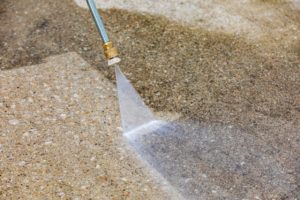
Why Change The Pressure Washer Nozzle?
Removing and replacing the pressure washer nozzle is necessary to save the time and energy you will spend cleaning the surface with a pressure washer. It helps in preventing performance issues and avoids the breakdown of equipment. Using the appropriate nozzle is also necessary to avoid damages and injuries, minimize chemical exposure, and achieve the desired cleaning efficiency. Using the variable nozzle to clean different surfaces is required to have the maximum output of the pressure washer. A cleaning nozzle is used with the cleaning agents, and a high-power nozzle is used to lift stains or layers.
How To Remove The Pressure Washer Nozzle?
Different pressure washers use different types of nozzles, and they are based upon the model and the company of pressure washers. Before removing the nozzle, you must know that there might be different methods to remove the nozzle from each pressure washer. The very first step that you need to fulfill is to find out where it is attached to the washer. It is usually on the end of the spray wand.
Now that you have located it, try to understand the procedure. The removal of the fasteners that are connecting the gun and nozzle is necessary. Some pressure washers use a plastic cap to hold the nozzle, while some high-power pressure washers use metal screws. There might be other components used to attach the pressure washer nozzle, and it can depend entirely upon the type of pressure washer. The basic idea to understand the method is to remove the nozzle without damaging it or the pressure wand. Depending on the type, you can lose the pressure washer nozzle by twisting it at the base where it is connected. Or you might have to use a wrench or screwdriver to unlock the nozzle from the pressure wand.
Once the nozzle is detached from the pressure wand, you can pull that by twisting off the nozzle. Some pressure washers have quick-release features by which you can easily pull the trigger and rod to unlock them and remove the nozzle easily without much effort.
Why Should You Remove Pressure Washer Nozzles?
Leaving the pressure nozzle in the pressure washer after use might have terrible consequences. If you do not remove the nozzle after the service and leave it there, it might wear and tear with time. This can cause leakages and other problems that are too hard to solve. Water has corrosion properties, and it might damage the inner parts of nozzles that are critical to maintaining the pressure. Moreover, leaving the nozzle in the pressure washer wand may cause dirt and debris to accumulate inside the nozzle, which will result in an uneven spray pattern.
Removing the pressure washer nozzle is necessary to avoid the undesired dirt building up inside the pressure washer, and this is necessary to increase the life of the pressure washer. Leaving the nozzle under pressure might cause it to degrade, which will diminish its puppyhood.
Conclusion
Removing the pressure washer nozzle is necessary to maintain the pressure washer integrity. Leaving the nozzle attached to the pressure may result in dirt and debris building up. You can damage the nozzle and the pressure wand if you remove the pressure washer nozzle by the non-recommended method. Most pressure washers have their unique nozzles, and they have different ways to remove and attach them. It is not rocket science to understand the technique, and you can learn it by simply looking at it.
- 10 Best Budget Pressure Washer 2023 – Reviews & Buyer’s Guide - December 7, 2022
- 10 Best Pressure Washer for Cars Wash Reviews [2023] - December 6, 2022
- 10 Best Commercial Pressure Washer 2023 –Buyer’s Guide - December 5, 2022
